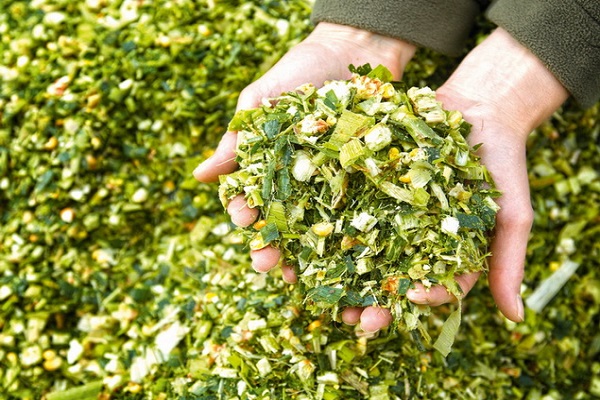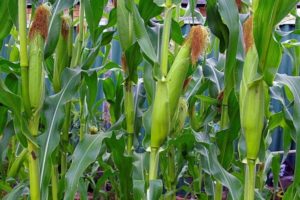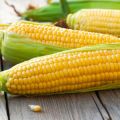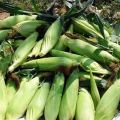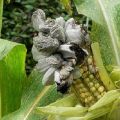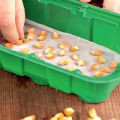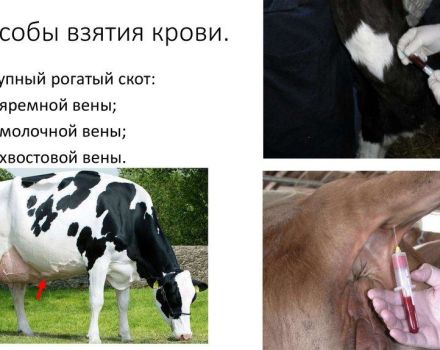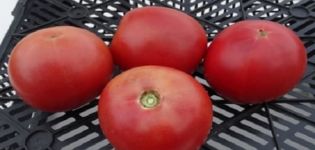Technology of cultivation of corn for silage, harvesting, varieties and yield
Silage corn is grown using a special technology. To grow a quality product, you need to follow all agricultural techniques and use modern technology for the manufacture of silage. It is a valuable plant food for domestic herbivores. Silage can be combined (made from cobs) and ordinary (the whole green part of the plant is used).
Corn for silage cultivation features
To obtain the most productive mass, corn silage is made following some technological methods. But before you start making it, you need to get acquainted with the rules for growing a culture.

Cultivation of corn for silage is different from grain technology. The similarity is that the same grain varieties of corn are chosen for silage and the same sowing dates are observed.
Before growing silage corn, you need to know its biological characteristics. Corn is an annual thermophilic cereal crop with a well-developed stem, leaves and roots. At first, the roots grow in the upper, heated soil layers, gradually deepening by 1–2 meters.
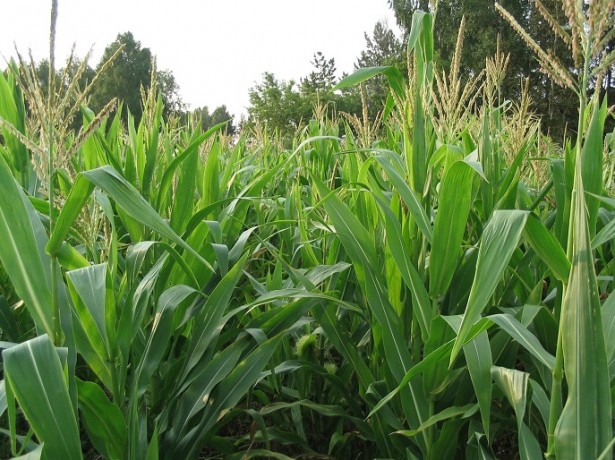
The stem is 7 cm thick; one plant can have up to 25 leaves. The stem is divided into nodes, the number of which does not increase with the growth of the plant. It can grow up to 5 meters in height by lengthening the space between the nodes. On the upper part there is a male inflorescence - a panicle. Stepchildren are formed on the lower nodes. If corn is grown for grain, then they should be removed.
Corn seeds begin to germinate at a temperature of +10 degrees. The warmer it gets outside, the more actively the culture grows. At a temperature of +15 degrees, the first shoots appear after 8 days. The culture can withstand frosts down to -3 degrees, lack of moisture and heat, but only during the germination period. If such unfavorable factors appear during flowering, the yield can be significantly reduced.
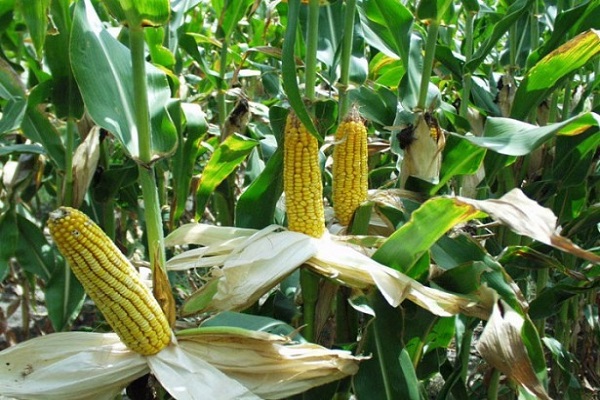
It is very important to determine the correct harvest time for corn silage, keeping the dry matter to maturity ratio. The dry matter content is a reliable criterion for determining the quality of corn silage. Harvesting is best started when the dry matter content is 28-30%.
Crop rotation
With good care, the yield of corn for silage per hectare can be 50–60 tons. If corn is grown for feed, then for the rapid development of green mass, you need to water the crop as often as possible. By using special irrigation systems, the yield can be increased to 80–100 tons per hectare.
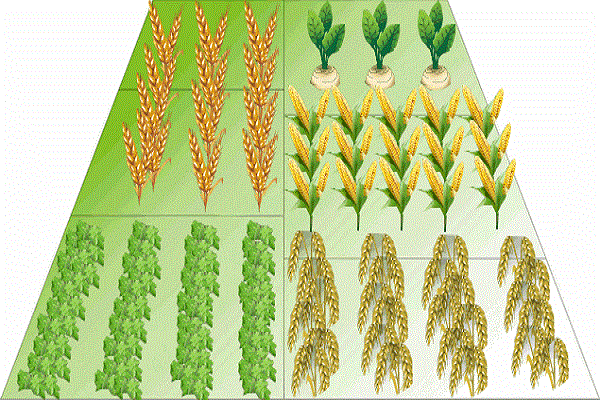
Silage corn is used as feed for cattle, rabbits, poultry because of its high feed value. The useful properties of the product include:
- the work of the digestive organs in animals is normalized;
- muscle mass increases;
- improved blood counts of animals;
- the number of milk yields in cows increases;
- contains a lot of vitamins, amino acids, organic fats.
To obtain a high-quality and rich harvest, you also need to observe crop rotation. It is advisable to plant it after cereals or legumes, perennial grasses. The best predecessors are vegetables such as potatoes, cucumbers, tomatoes, beans. It is recommended to change the crop planting site every 3-4 years.
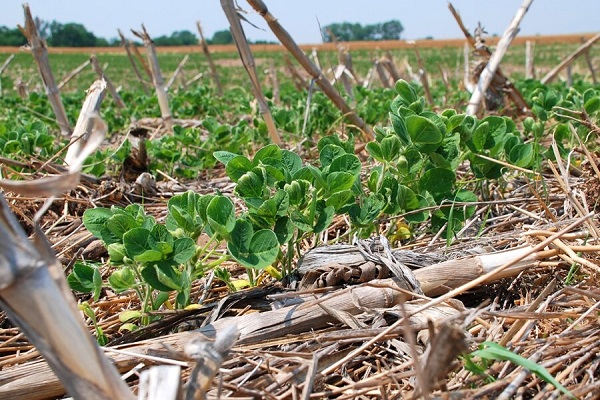
The soil
For sowing corn for silage, chernozem, loamy, sandy loam and sandy soils with normal acidity are best suited. To cultivate corn, you need to carefully prepare the soil.
If the soil is prone to waterlogging and high acidity, then it will not work to cultivate the crop. It is recommended to lime acidic soils 1–2 years before sowing.
Corn needs good aeration, especially during the germination stage. The embryos absorb a lot of oxygen, and a good harvest will be only when there is about 20% oxygen in the soil air.

In autumn, the plot is dug to a depth of 25–30 cm. When weeds appear or after rains, harrowing is carried out. At the same time, organic fertilizers can be applied, for example, manure. In the spring, harrowing is carried out to a depth of 5 cm, after which the soil is cultivated to a depth of 8 cm.
The best predecessors for corn for silage are considered winter and spring grain crops, buckwheat, potatoes, legumes. It is not recommended to plant after beets, millet and sunflowers, as these crops lead to a deficiency of trace elements in the soil and a lack of moisture.
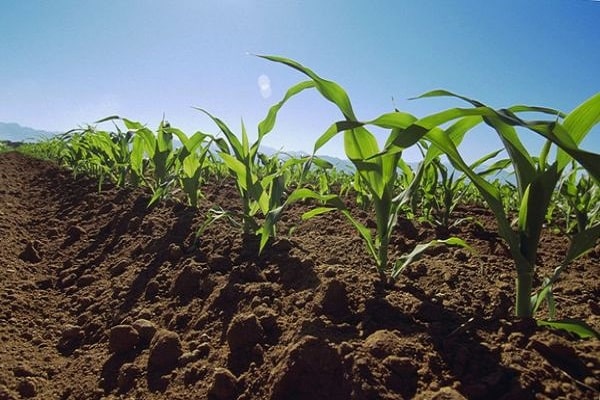
Varieties and hybrids of corn
For growing corn there is no need to wait until the grain is fully ripe for silage. Therefore, it is better to choose late-ripening varieties, which accumulate many nutrients upon reaching the milky-wax ripeness. To increase the yield, early and mid-season varieties can be mixed together with late-ripening varieties.
The most popular varieties of corn grown for silage include: Sterling, Partizanka, Osetinskaya, Dnepropetrovskiy, Adevey, Dubrava, Kalina. All these varieties have a high digestibility by animals, develop rapidly and give a rich harvest.
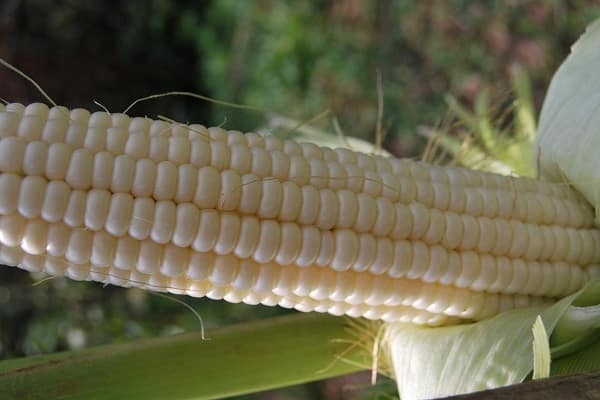
In order for the seeds of the selected variety to sprout well, and the plant has good immunity, they must be disinfected. For this purpose, the seeds are treated with manganese.
Corn straw (stems and leaves after picking off the cobs) of any variety is best silage at about 45% moisture. In this state, they soften, after which they are crushed into small pieces (1 cm). You can dry the straw in special drying units or spread it in a thin layer on level areas. Use dry straw in granular or briquetted form.
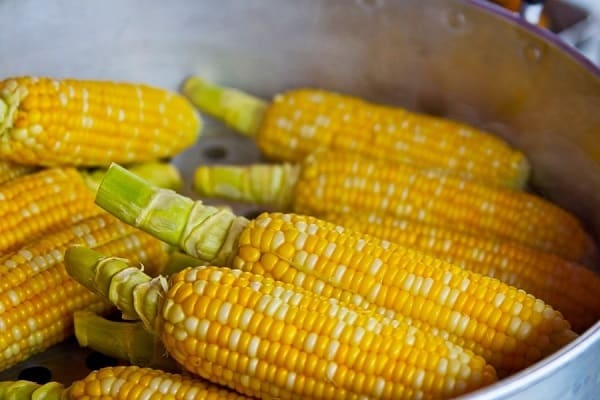
Sowing dates
Fields begin to sow only after the soil warms up to +12 degrees to a depth of 8 cm. If the soil is heavy, clayey, then the depth of planting seeds should be about 4 cm. The dates fall approximately at the beginning of May.
After sowing, it is imperative to harrow. The second harrowing is carried out after 4–5 pairs of leaves have developed on the plant. More information on the technology of cultivation of corn for silage can be found in the table.
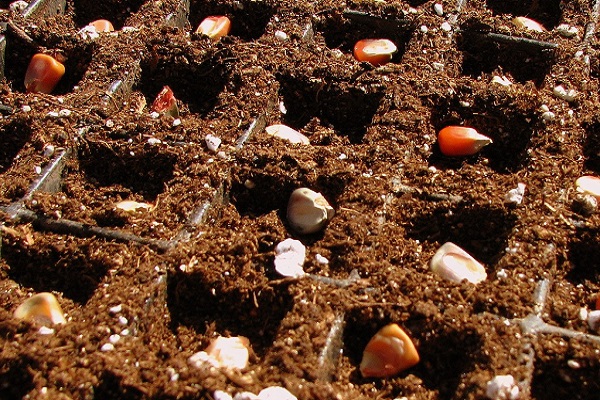
| Types of jobs | Dates | Requirements |
| Autumn plowing | From late August to early October | The layers of earth are turned over, plant residues are removed from the site |
| First harrowing | First days of April | Loosening depth 4 cm |
| Second harrowing and cultivation | April | Cultivation depth 15 cm, undermining weeds, cultivation is carried out to a depth of 5 cm |
| Sowing | May 5-10 | Seed preparation |
| Harrowing before germination | One week after sowing | Loosening the topsoil |
| Harrowing by seedlings | On the 20th of May | Loosening and weed control |
| Weed control and herbicide treatment | As it grows | Processing is carried out with drugs that are diluted according to the instructions |
| Harvest | Mid august | Cutting and chopping a plant |
To get a large harvest of ears and prevent the development of problems, you need to follow the basic rules of crop cultivation. The density of sowing, compliance with crop rotation, the composition of the soil and its correct preparation, the timing of sowing and harvesting, methods of combating weeds, pests and diseases are important.

Sowing density of corn for silage
The standing density of corn depends on the ripeness group, variety and soil moisture. The planting density of 55–100 kg per hectare of area is considered to be the norm for sowing corn for silage. The density of standing of plants in the garden for green mass in the garden is 6–8 pieces per one meter of land. In these cases, the ears are almost never tied; only green mass is collected for feed. Most of the plants are in the shade, more moisture is retained in the soil - these are all conditions necessary for growing a plant for feed.
Early varieties of corn can be sown thicker than late-ripening ones. The higher the plant stem stretches, the fewer plants should be sown per square meter. m. An increase in the density of standing corn for silage by at least 10% leads to an average yield.
When sowing seeds in the fields, a distance between rows equal to 65–70 cm is observed. In the garden, they are sown mainly in a square-nesting method according to a 40x40 cm scheme.
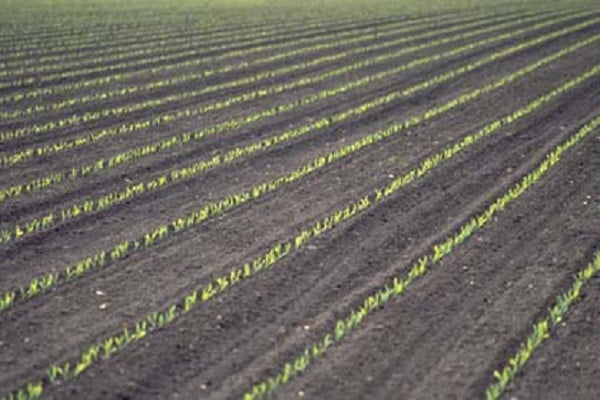
Fertilizers
To get a good harvest of corn intended for forage for herbivores, you need to apply fertilizers on time. Corn responds equally well to both mineral and organic fertilizers.
When growing corn for silage for animals, the emphasis is on the development of green mass, therefore, nitrogen is of great importance in the early stages of corn development. In the case of its lack, the growth and development of the plant slows down. Calculate approximately 25 kg of nitrogen fertilizer per hectare. After 3-4 weeks, the fertilization is repeated.
With a lack of potassium, the leaves turn dark green, the growth of the green and root parts of the plant slows down, then the leaves begin to curl, turn yellow and dry out.

Throughout the growing season, corn needs phosphorus. The culture especially needs this microelement after germination, as well as in the phase of flowering and grain formation. With its lack, the formation of grains in the cob slows down, the leaves turn dark green with red-violet veins and gradually die off.
It is recommended to apply phosphate and potash fertilizers in autumn. Litterless manure is especially useful for maize for silage. It is useful to apply nitrogen fertilizers before sowing between rows.
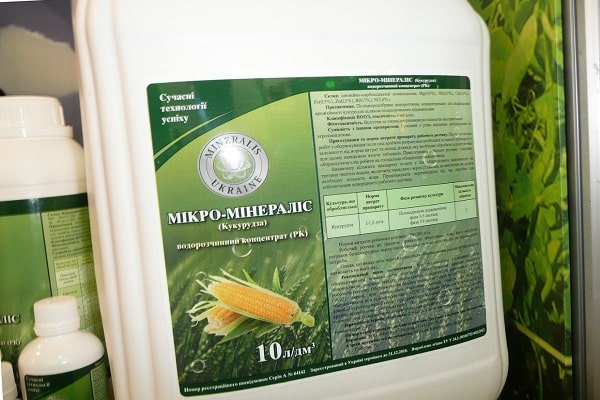
Herbicides
Weeds cause a decrease in yield, the spread of pests and various diseases. Therefore, in addition to adhering to agrotechnical practices, the cultivation of corn is not complete without timely weed control. The use of herbicides is considered to be an effective method.
Before the emergence of seedlings, such herbicides as Aurorex, Erodican, Reglon are embedded in the soil (the rate of application is about 8-10 l / ha). The soil surface can be treated with such preparations as Harnes, Roundup (consumption rate 3 l / ha).
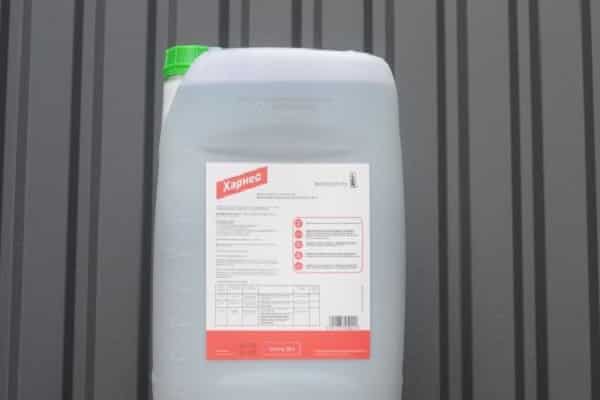
If pre-emergence herbicides have not shown their effectiveness, post-emergence preparations are used: Ballerina, Milady, Adengo, Dialen, Turbin, Desormon, Luvaram (consumption rate 2 l / ha). The preparation Cowboy 200 g / ha can be used.
Silage harvesting begins in August. When sowing 50 thousand seeds per hectare, about 55 centners of fodder units per hectare and about 220 centners of green mass are obtained.
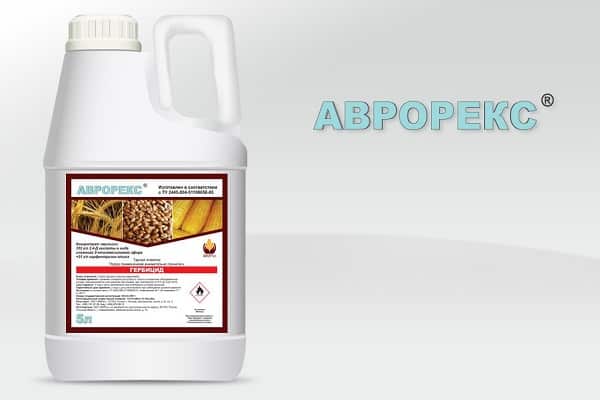
Diseases and pests
If diseases or pests are found on plants, it is necessary to deal with the problem in a timely manner. This will prevent a massive spread of infection, which will save most of the crop.
Among the pests most often attacked:
- wireworm (larvae penetrate the stalks, cobs and after a couple of weeks the grains turn black);
- meadow moth (larvae feed on young leaves of the plant);
- deciduous scoop (insects gnaw not only the entire green part of the plant, but also the grains);
- Swedish oat fly (insects eat young shoots).
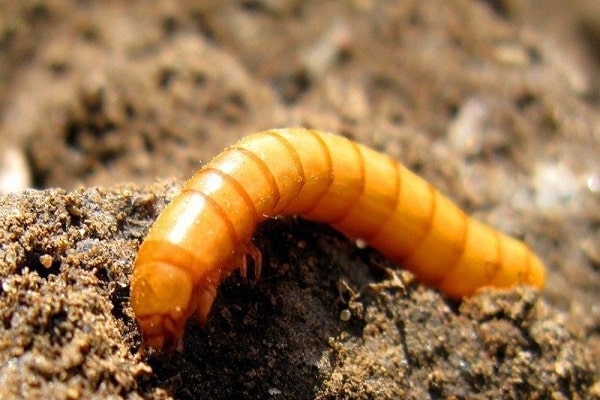
Of the diseases, powdery mildew, rust, and blister smut are most often affected. Corn leaves turn pale, black dots and stripes may appear, dry out, curl.
It is very important to properly treat seeds before planting and carry out preventive insecticide treatments. You can use drugs such as Force, Karate, Vantex.
To reduce the risk of disease and pest infestation, it is necessary to follow the technology of cultivation of corn for silage. It is imperative to monitor the crop rotation, deeply cultivate the soil in the fall, pickle the seeds, sow seeds on time, and harvest.
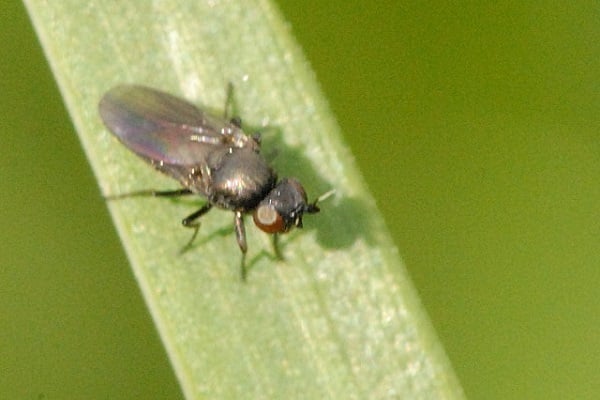
Maize harvesting for silage
In corn, there are 4 stages of grain development: grain formation (lasts two weeks from the beginning of fertilization), milk and milky-waxy (these two stages last about 10-12 days), waxy (about 15 days) and full maturity.
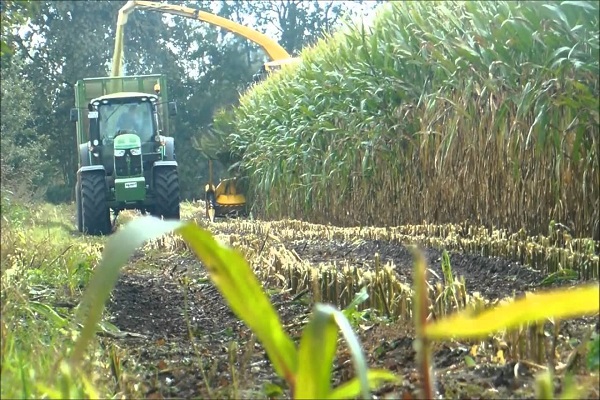
Harvesting of corn for silage begins from the moment of milky-wax maturity of the grain. When pressed on the grain, a light liquid and a thick mass are released. At this stage, the grain contains an average of 46% moisture, 34% in the leaves, and 80% in the stem. Harvesting continues until the wax ripeness phase is reached.
Mowing is carried out with special agricultural machinery (forage harvester) to a height of 12–15 cm. Observing the terms and rules of harvesting, you can get useful and high-quality food for pets.
